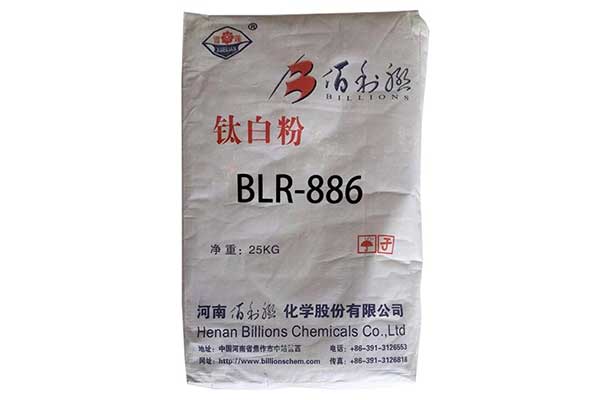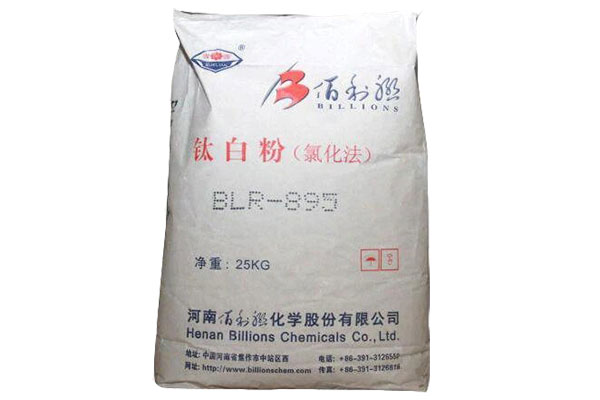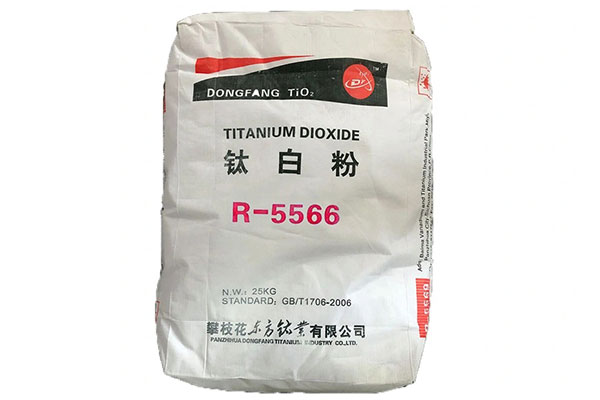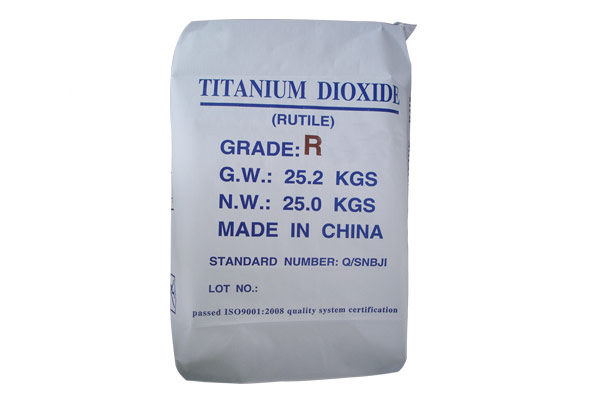Home » Titanium Dioxide
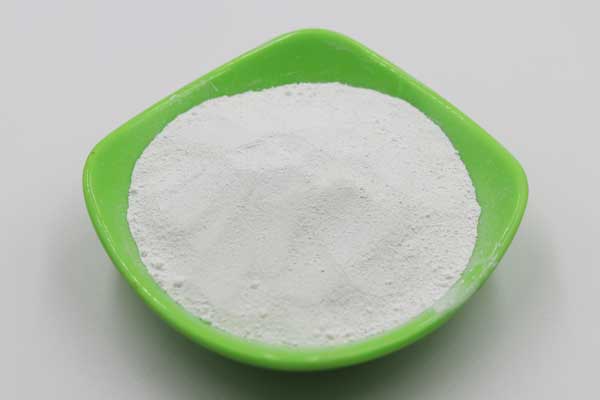
What Is Titanium Dioxide TiO2
- CAS NO.: 13463-67-7
- HS Code: 28230010
- MF: TiO2
- Grade: Rutile grade, Anatase grade
Titanium dioxide pigment is a kind of white powdery inorganic pigment, which mainly contains two crystalline forms rutile Ti02(R-type) and anatase Tio2(A-type). Depends on its characteristics of the best opacity, whiteness and brightness, high refractive index and covering power, it is widely used as a colourant in a wide array of industrial fields, such as, paint and coatings, plastics, paper making, printing inks, chemical fiber, rubber, cosmetics, etc. Titanium dioxide powder is the whitest and brightest of the known white pigments in the world. Meanwhile, with reflective qualities, it can also both scatter and absorb UV rays. It is one of the most common pigments in global use and the basis for most paint colours.
Hot Sale Brands & Models of Titanium Dioxide Powder



| Rutile Grade Titanium Dioxide TiO2 | Anatase Grade Titanium Dioxide TiO2 |
| R996 | A200 (Low Heavy-Metal) |
| R1930(General Use) | B101 (General Use) |
| R1931 (General Use) | A100 (General Use) |
| R218 (General Use) | A101 (General Use) |
| R216 (General Use) | A102 (General Use) |
| R909 (Special for Paint & Coating) | A102 (General Use) |
| R299 (Special for Plastic,Colour Master Batch) | Anatase TiO2 (Ceramics Grade) |
| R210 (Economic Grade) | Anatase TiO2 (Enamel Grade) |
| R213(Special for Plastic,Colour Master Batch) | A1(General Use) |
| R818(General Use) | A125(General Use) |
| R836(Special for Paint & Coating) | |
| R838(Special for Paint & Coating) | |
| R868(For high performance Paining) | |
| R878(Special for Plastic,Colour Master Batch) | |
| R311(Special for Paint & Coating) | |
| R312(General Use) | |
| R315(Special for Plastic,Colour Master Batch) | |
| R318(Special for Plastic,Colour Master Batch) | |
| R316(Special for Leather,wood lacquer) |
| Grades of Lomon Titanium Dioxide |
| R996, BLR-896, BLR-891, BLR-886, BLR-852, BLR-698, BLR-699, LR-972, LR-961, TR52, LR-982, TR53, LR-108, BLR-688, LR-952, BLR-501, BLR-601 |
Would like The Quotation?
Leave your demands in detail here(including the model, package, brand, quantity), we will reply you quickly.
Chemate can supply rutile titanium dioxide with many popular models on the market. You can check more details and feel free to inquiry us for the best price.
If you would like to purchase anatase titanium dioxide. Our company will be your ideal choice. Click here to check all models and specifications. Or inquiry us directly for quotation.
Best whiteness, brightness and best opacity.
Strong adhesion and good covering ability.
High temperature resistance, excellent electrical properties.
Would like The Quotation?
Leave your demands in detail here(including the model, package, brand, quantity), we will reply you quickly.
What Are Main Applications of Titanium Dioxide Pigment
- Paint and coating. It is the largest application of titanium dioxide pigment. Generally, the consumption of titanium dioxide in the coating field accounts for 60% in the all application fields of TiO2.
- Plastic. Plastic industry is the second largest application field of titanium dioxide TiO2 pigment, which accounts for 20% of total consumption of titanium dioxide. The application of titanium dioxide TiO2 in plastic products mainly uses its high hiding power, high achromatic power and other pigment properties. In addition, it can also improve the heat resistance, light resistance and weather resistance of plastic products. It can protect plastic products from UV light, improve the mechanical and electrical properties of plastic products.
- Paper making industry. It is the third application field of titanium dioxide pigment. Paper using titanium dioxide has the characteristics of good whiteness, high strength, gloss, thin and smooth. It doesn’t penetrate during printing. Under the same conditions, the opacity is 10 times higher than paper using calcium carbonate and talc. For paper with anti-aging requirements, it must use rutile type. More rutile type TiO2 is used in high ash paper, for that the hiding power of anatase type can’t reach requirement. Anatase type TiO2 powder is used in low-ash paper, for that such paper types require good opacity.
- Masterbatch. The masterbatch can be used for color matching of polyvinyl chloride, polythylene, plypropylene, polystyrene and ABS plastics. Its main ingredients are pigments, resins, dispersants, fillers, fluorescent whitening agents, antioxidants, anti-ultraviolet agents, brighteners, etc. Used as a white pigment, titanium dioxide TiO2 is with the properties of non-toxic, stable chemical property, high hiding power, good dispersion and other advanta

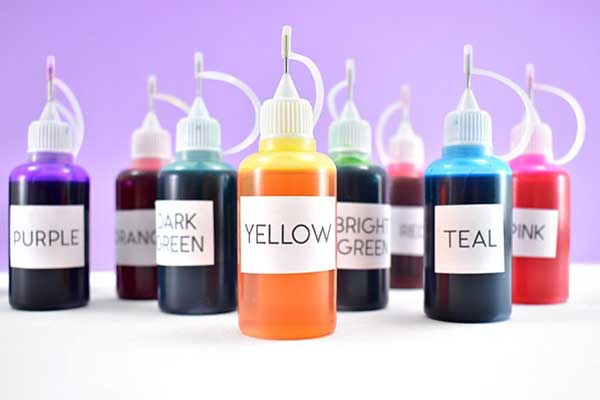


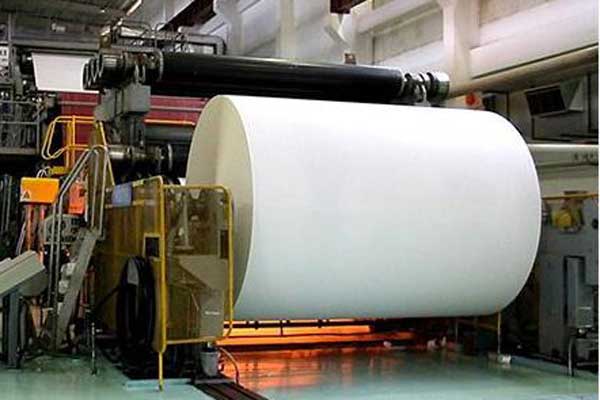
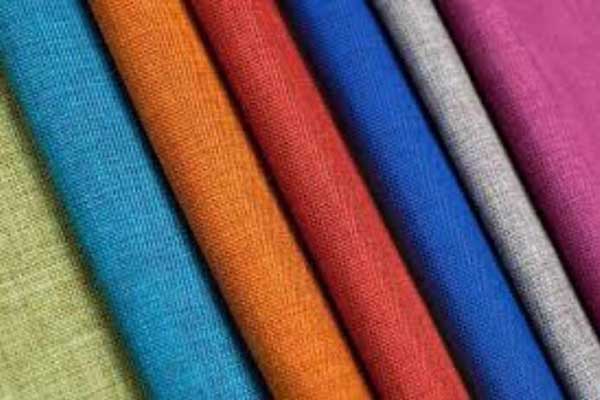
Would like The Quotation?
Leave your demands in detail here(including the model, package, brand, quantity), we will reply you quickly.
Know More About Titanium Dioxide
Dielectric constant
Because of its high dielectric constant, titanium dioxide pigment has excellent electrical properties. In the determination of some physical properties of titanium dioxide, the crystallization direction should be considered. For example, the permittivity of rutile type titanium dioxide pigment varies with the direction of the crystal. When it is parallel to the C axis, the measured dielectric constant is 180, and it is 90 when it is at a right angle to this axis. The average value of the powder is 114. The permittivity of anatase type is relatively low, which is only 48.
Conductivity
Titanium dioxide has the properties of a semiconductor. And its conductivity increases rapidly with temperature rise. Rutile titanium dioxide pigment is still an electric insulator at 20℃. But when heated to 420℃, its electrical conductivity increases by a factor of 107. Slightly reducing the oxygen content will have a special affect on its electrical conductivity. Electronics industry uses the conductivity characteristics to produce ceramic capacitors and other electronic components.
Hardness
According to the Mohas hardness scale of 10 points, the rutile type is 6 to 6.5, and the anatase type is 5.5 to 6.0. Therefore, in order to avoid abrasion of the spinneret in chemical fiber extinction, the anatase type is used.
Melting point and boiling point
Since both anatase and brookite titanium dioxide will transform into rutile type titanium dioxide at high temperature. Only rutile type has a melting point and boiling point. The melting point of rutile titanium dioxide is 1850 ℃. The melting point is related to the purity of titanium dioxide. The boiling point of rutile titanium dioxide is (3200 ± 300) K. At this high temperature, titanium dioxide is slightly volatile.
Hygroscopicity
Although titanium dioxide is hydrophilic, its hygroscopicity isn’t very strong. The hygroscopicity of rutile type if smaller than the anatase type. The hygroscopicity has a certain relationship with its surface area, the higher the surface area is, the higher the hygroscopicity is. Meanwhile, it is also related to surface treatment and properties.
Thermal stability
Titanium dioxide pigment is a substance with good thermal stability, and the general dosage is 0.01% to 0.12%.
The particle size distribution of titanium dioxide is c comprehensive index, which seriously affects the performance of titanium dioxide pigment and product application performance. Therefore, the discussion on covering power and dispersion can be directly analyzed from the particle size distribution.
The factors that affect the particle size distribution of titanium dioxide powder are more complicated. The first is the size of the original particle size of hydrolysis. By controlling and adjusting the hydrolysis process conditions, the original particle size is within a certain range. The second is the calcination temperature. During the calcination of metatitanic acid, the particles undergo a crystal transformation period and growth period. The appropriate temperature is controlled so that the growing particles are within a certain range. The last is the crushing of the product. The modification of the Raymond mill and the adjustment of the analyzer speed are usually used to control the quality of the crushing. Other crushing equipment can also be used, such as, universal mill, air jet mill and hammer mill.
Superhydrophilic surface. Research suggests that the superhydrophilicity of the TiO2 surface results from changes in its surface structure under light conditions. Under the irradiation of ultraviolet light, TiO2 will form separately positive trivalent titanium ions and oxygen vacancies. At this time, the hydrolytic ions in the air is absorbed in the oxygen vacancy and becomes chemically adsorbed water. The chemically adsorbed water can further adsorb moisture in the air to form a physical adsorption layer.
Surface hydroxyl. Compared with the metal oxides of other semi-metallic materials, the polarity of Ti-O bonds in TiO2 is relatively large. The water adsorbed on the surface dissociates easily forms hydroxyl groups due to polarization. This surface hydroxyl group can improve the performance of Tio2 as an adsorbent and various monomers, and provide convenience for surface modification.
Surface acid-base property. When TiO2 is modified, oxides such as AI, Si and Zn are often added. When the oxides of AI or Si exist alone, there is no obvious acidity or alkalinity. However, when combined with Tio2, solid superacid can be prepared.
Surface electrical behavior. TiO2 particles in a liquid, especially polar medium will adsorb opposite charges due to the charge on the surface to form a diffused electric double layer, which increases the effective diameter of the particles. When the particles are close to each other, they are repelled due to the same charge. It is beneficial to the stability of the dispersion system. For example, the surface of Al2O3 coated TiO2 has a positive charge, while TiO2 treated with SiO2 has a negative charge.
Sulfuric acid method
Subject ferro-Titanium powder and concentrated sulfuric acid to an acid hydrolysis reaction to produce titanyl sulfate, which is hydrolyzed to produce metatitanic acid. And then calcine and crush to obtain a titanium dioxide product. This method can produce both rutile titanium dioxide and anatase titanium dioxide pigment.
Advantages. It take ilmenite and sulfuric acid with the features of low price and easy availability as raw materials. The technology is mature, the production equipment is simple and the anti-corrosion material is easy to solve.
Disadvantage. The process is so long and it can only adopt intermittent operation. Sulfuric acid and water consumption are high. The produced waste and by-products are more. Thus causing great environment pollution.
Chlorination Method
Use materials containing titanium. Make the chlorinated high-titanium slag, or artificial rutile, or natural rutile react with chlorine gas to generate titanium tetrachloride. Purify it by rectification and then subject to gas-phase oxidation. After rapid cooling, TiO2 is obtained through gas-solid separation. Because the TiO2 adsorbs a certain amount of chlorine, it needs to be removed by heating or steam treatment.
The process is simple, but it is chlorinated at 1000℃ or higher temperature. There are many chemical engineering problems, such as, high corrosion of chlorine, oxychloride and titanium tetraloride that need to be solved. In addition, the raw materials used are special, which is more costly than the sulfuric acid method.
Chlorination production is continuous production. The operation flexibility of the production equipment isn’t large, and it isn’t easy to adjust the the start or stop of the process and production load. However, its continuous process production is simple, the process control points are few, the product quality is easy to achieve optimal control. In addition, without the sintering process formed by rotary kiln calcination, the primary TiO2 particles are easy to depolymerize. So apparently people are accustomed to believe that the quality of the chorinated titanium dioxide is much better.
Advantages. Short process, easy expansion of production capacity, high degree of continuous automation, relatively low energy consumption less “three wastes”. Meanwhile, it can obtain high quality products.
Disadvantages. Large investment, complex equipment structure, high requirements on materials, high temperature resistance and corrosion resistance, difficult maintenance of the device, and difficulty in research and development.
- Used in solvent-based coatings and water-borne coatings, titanium dioxide powder not only plays the role of covering and decoration. The most importantly, it can improve the physical and chemical properties of the coatings, enhance the chemical stability, improve hiding power, decolorization power, corrosion resistance, light resistance and weather resistance. Meanwhile, it can enhance the mechanical strength and adhesion of the coating film, prevent cracking and shedding, prevent the penetration of ultraviolet rays and moisture, as well as extend the service life of objects.
- Compared to other commonly used pigments, such as, zinc white, zinc barium white, titanium dioxide pigment has more advantages, for that its particles are small and uniform with high optical stability. Whether in terms of hiding power or achromatic power, the performance of rutile titanium dioxide and anatase titanium dioxide are far superior to zinc white and zinc barium white.
- Used in plastic, titanium dioxide pigment has the characteristics of high whiteness, great achromatic power, good opacity and chemical stability. If it is used instead of lithopone, the consumption of white pigment can be reduced by 50% to 70%.
FAQs of Titanium Dioxide
1. What are the differences between Rutile and Anatase titanium dioxide?
Titanium dioxide TiO2 is mainly divided into two crystal forms: rutile (R-type) and anatase (A-type). Rutile TiO2 has a denser structure, higher refractive index, hiding power, weather resistance, and anti-chalking properties, making it more widely used. Anatase TiO2 has slightly better whiteness but poorer weather resistance and is mainly used in interior coatings and papermaking.
2. Why does titanium dioxide have such strong hiding power?
The strong hiding power of titanium dioxide stems from its high refractive index. Titanium dioxide (especially rutile titanium dioxide) has the highest refractive index among white pigments (2.76). When light shines on a paint film containing titanium dioxide, strong scattering and reflection occur at the pigment-base interface, thus completely covering the substrate.
3. Why must titanium dioxide be used in coatings?
Titanium dioxide plays three key roles in coatings:
Hiding, covering the base color of the wall.
Whiteness, providing a pure white.
Durability, protecting the paint film and wall against UV aging.
4. What is the role of adding titanium dioxide to plastics?
The main roles of TiO2 powder in plastic products are hiding (eliminating the color or transparency of the plastic itself), whitening (making the product brighter), and anti-aging (reflecting UV rays, delaying plastic degradation and yellowing).
5. How do I choose the right titanium dioxide type for my industry?
Generally, the selection depends on the end application.
Outdoor products (such as architectural exterior coatings and automotive paints) must use rutile, which has good weather resistance.
Indoor products (such as interior wall paints and paper) can use the more cost-effective anatase. Additionally, the surface treatment process and particle size distribution should be considered.
You can tell us your final use or some performance requirements, then our professionals will recommend the most suitable type for you.
6. What role does titanium dioxide play in cosmetics?
In cosmetics (especially physical sunscreens), titanium dioxide pigment primarily functions as a UV shield, protecting the skin by reflecting and scattering ultraviolet rays. It also provides coverage and whitening effects.
7. Is titanium dioxide harmful to the human body?
Finished titanium dioxide is chemically stable and generally considered non-toxic, therefore it is widely used in cosmetics (such as sunscreens) and food (as a colorant, code E171).
8. What is the difference between titanium dioxide and lithopone?
Litterone is a mixture of zinc sulfide and barium sulfate. Its whiteness, covering power, and weather resistance are far inferior to titanium dioxide, but it is cheaper. In the low-end market or in areas where performance requirements are not high, it can be used as a partial substitute for titanium dioxide.
9. What does “coating” treatment of titanium dioxide mean?
To improve the dispersibility, weather resistance, and anti-chalking properties of titanium dioxide in certain media, manufacturers coat the surface of titanium dioxide TiO2 particles with one or more layers of inorganic materials (such as alumina, silicon dioxide) or organic materials. This process is called “coating” or “surface treatment.” Coating is a crucial step in the production of high-performance titanium dioxide.
10. What do the “blue hue” and “yellow hue” of titanium dioxide mean?
These are terms describing the undertone of titanium dioxide. Blue-hue titanium dioxide appears whiter and brighter, especially when mixed with carbon black to produce a purer gray, and is often used in high-end coatings and plastics. Yellow-hue titanium dioxide has a slightly yellowish undertone and may appear less white in some applications. The undertone is related to the particle size distribution and surface treatment of the titanium dioxide.

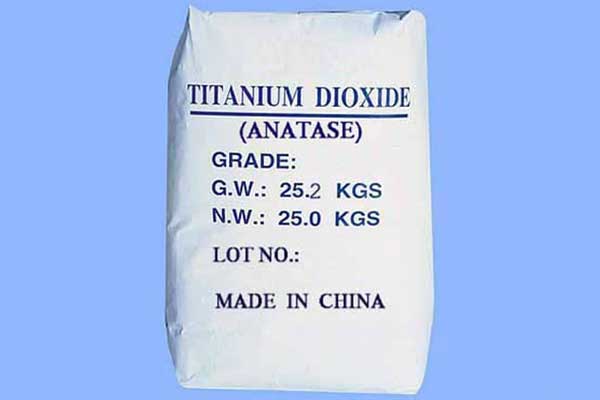

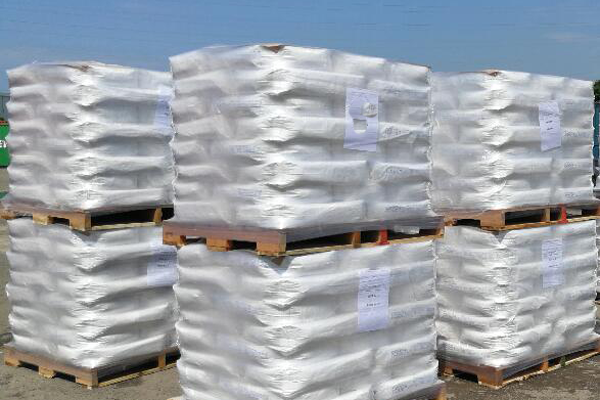
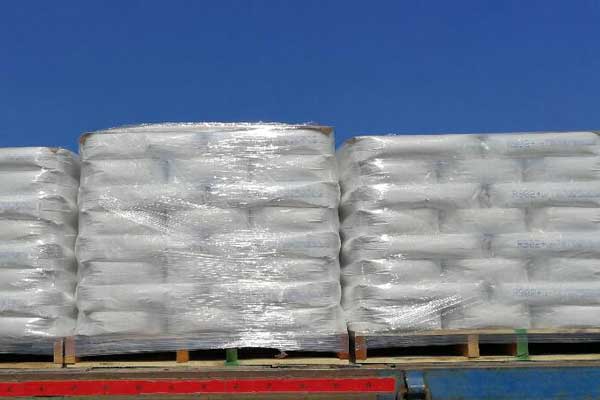
- Email: sales@chemategroup.com
- Tel: 0086-371-60921621
- Whatsapp: +86 18624832876
- Wechat: +86 18624832876
- ADD: NO.80 PUHUI ROAD,ZHENGZHOU CITY, HENAN PROVINCE, CHINA



